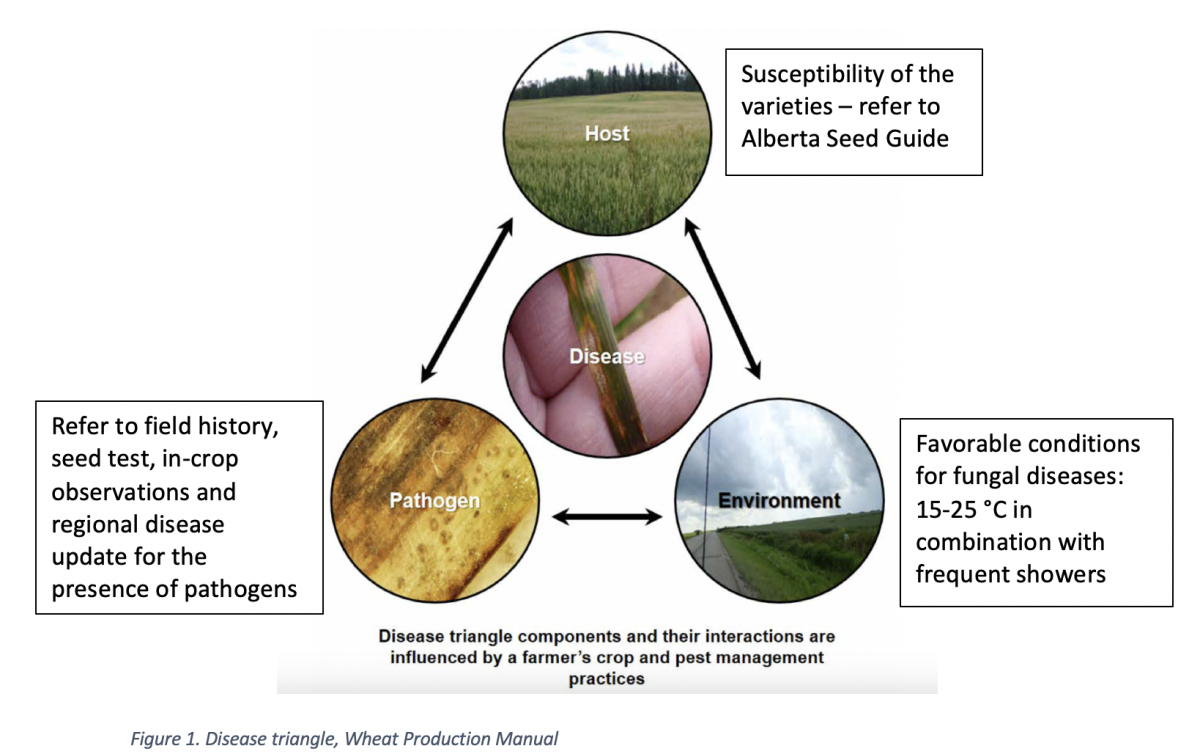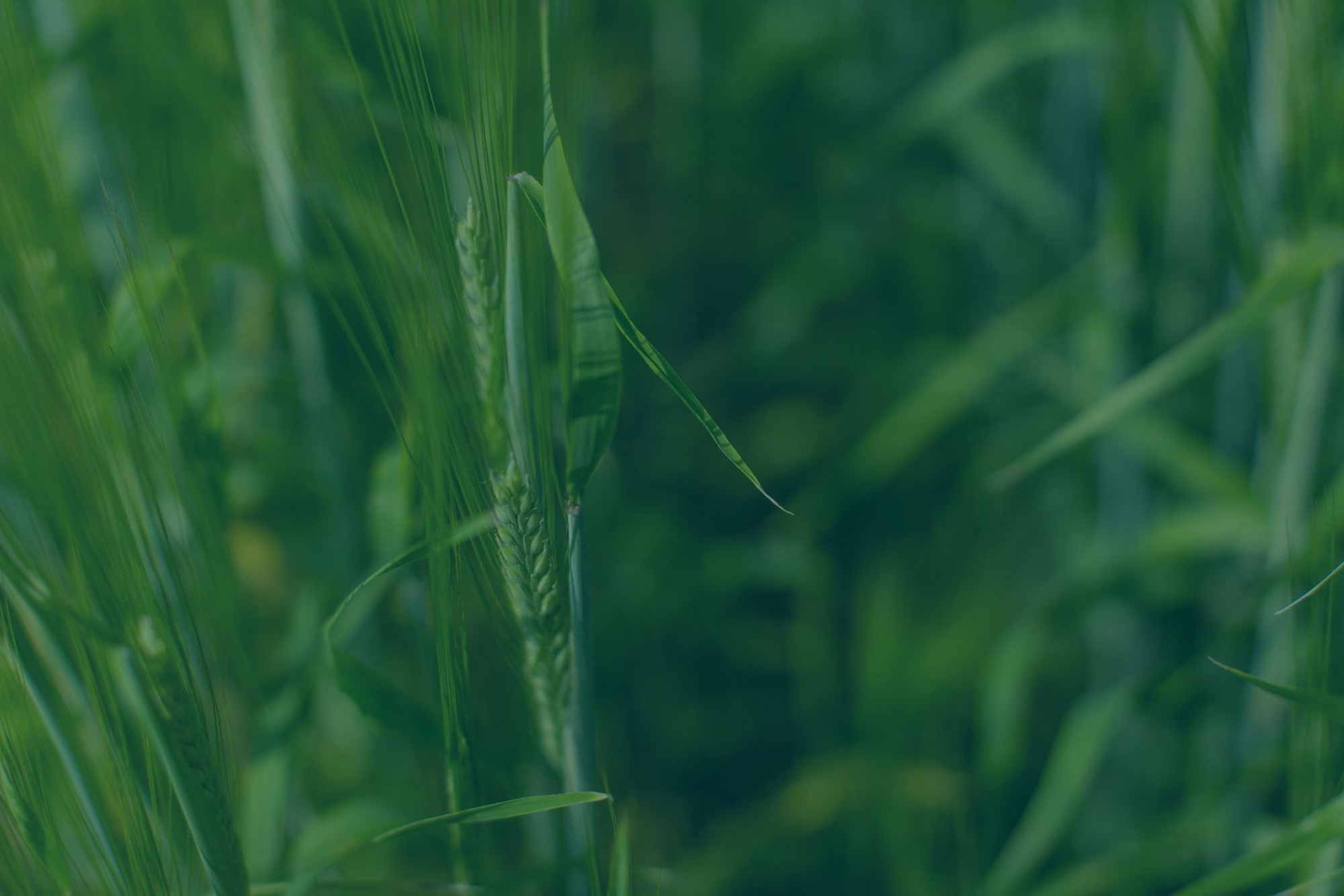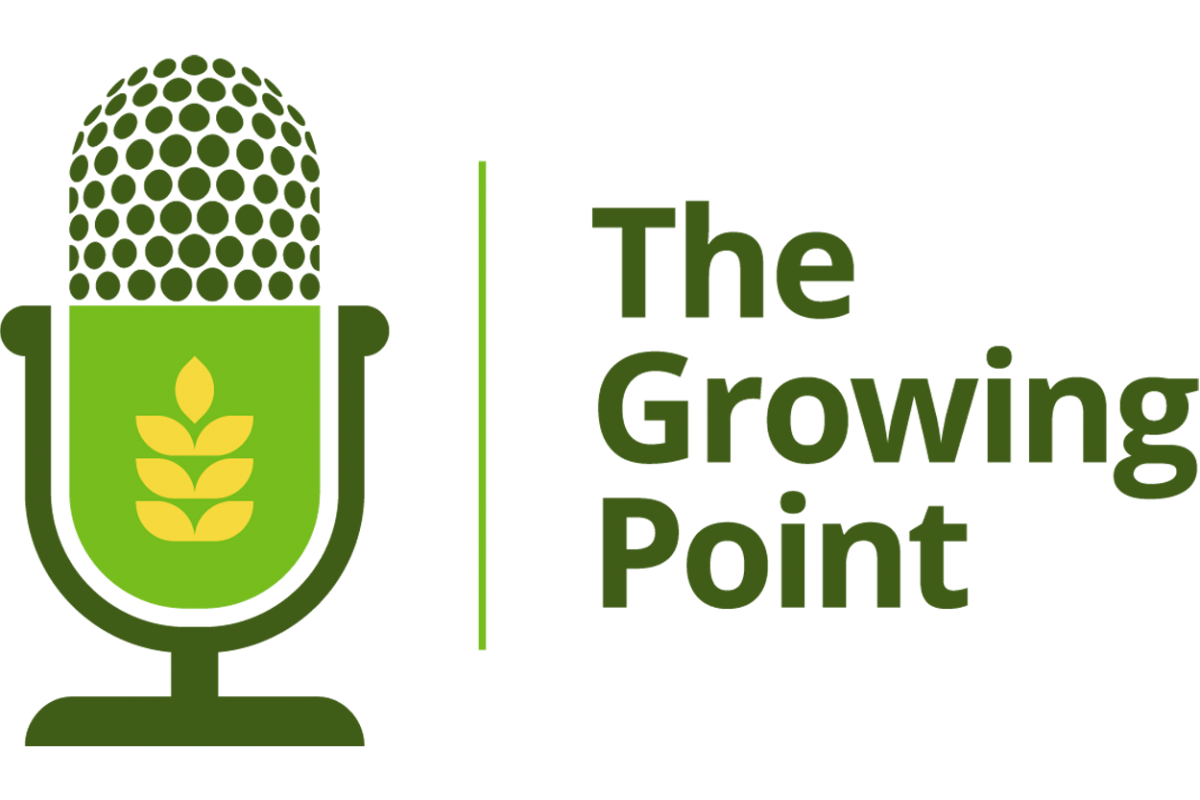Foliar Fungicide Q&A
Fungicides protect the crop against various fungal diseases. Though a common practice, fungicides' yield and economic benefit vary greatly from year to year, and between the fields. This article will look at the frequently asked questions regarding in-crop fungicides.
When is an in-crop fungicide worth it?
The yield benefit from a fungicide is variable. Within the same environment, yield improvement provided by fungicides can range between 5.5% and 44.0%. The benefit is maximized when 1) the crop has a good yield potential; 2) the variety is susceptible; and 3) the disease pressure is high.
To make the fungicide “worth it”, the economic benefit it offers must outweigh the associated costs. A basic estimation for calculating this benefit is as follows:
Economic benefit = (Grain Yield increase x Grain Price) - Fungicide cost (chemical + application + crop trample damage)
For example, assume the fungicide product costs $20/acre, the application costs $8/acre. The sprayer is 120 ft and crop trample damage is 1 bu/ac on wheat. When the wheat price is $12/bu, the value of the trampled wheat is $12/ac. Therefore, the total cost of a fungicide application in this case is $20+8+12 = $40/ac. To break even, the farmer needs at least 3.3 bu/ac yield increase.
To aid in decision-making, a practical tool is available to calculate the economic benefit derived from fungicide applications. This tool helps assess the potential returns and costs associated with using fungicide.
How much disease pressure is present?
The occurrence of plant diseases requires 3 factors: virulent pathogen, susceptible host crop and conducive environment.

Assessing the three factors provides an overall general estimate of the disease pressure. Frequent scouting is a great way to stay on top of leaf spot and rust dynamics in specific fields. In addition, growers can stay updated on local disease trends and weekly cereal rust risk updates through Prairie Crop Disease Monitoring Network.
FHB risks can be assessed using this Fusarium Head Blight risk tool.
Which cereal diseases are in-crop fungicides protecting against?
Depending on the fungicide product, a fungicide application protects the crop against some or all of the following fungal diseases:
• Rusts: - Stripe rust
- Stem rust
- Leaf rust
• Tan spot/Septoria leaf complex
• Powdery mildew
• Net blotch
• Scald
• Spot blotch
• Fusarium head blight
The fungicides do NOT protect the crop from:
• Bacterial leaf streak/black chaff
• Wheat streak mosaic virus
These diseases are caused by bacterial/viral pathogens. Find out more about bacterial leaf streak diagnosis and management here.
What are my fungicide options?
Alberta Blue Book provides comprehensive fungicide options and the diseases they control/suppress.
Talk to local agronomists about fungicide choices and the rotation of fungicide groups.
Always read and follow the fungicide product label.
Flag leaf vs head timing fungicide, which one is a better timing?
In general, fungicides only protect the leaves that they are applied to. Fungicides have limited ability to move within the plant to new leaves. For this reason, the fungicides need to be directly applied to leaves that are important to grain filling. Considering this, the optimal timing to suppress FHB is during flowering, while the optimal fungicide timing to control foliar diseases will depend on the growth stage when disease first appears and subsequent development.
In western Canada, it is usually not economical to apply fungicides at both timings. This brings the question of, which timing is most beneficial. Like most agronomy questions, the answer is not simple. The following is a decision-making tree that walks the process step-by-step.
Early-season disease risk assessment:
Check the following that applies to you:
• Does the field have shorter rotations
• Are the varieties susceptible to the diseases
• Is there a previous history of moderate to severe disease
• Is the field located in an area that has risks for certain diseases
• Do you easily see symptoms of leaf disease when scouting for weeds
If you answered "yes" to any of the above questions, your disease risks are higher and you should be prepared to apply a fungicide.
Before flag leaf stage:
Is risk present for stripe rust?
Yes: the economic threshold is 1-5% plants showing symptoms or leaf area infected. If stripe rust is found, do not wait until flag leaf or head timing to apply fungicide
No: keep monitoring
At flag leaf stage:
Is foliar disease present on the flag leaf or on the penultimate leaf with environmental conditions conducive for further fungal infection?
Yes: Appling a foliar fungicide will likely provide a benefit.
No: keep monitoring
Also keep in mind whether you have an FHB risk (e.g. have you had previous Fusarium graminearum (Fg) infections, especially downgrading due to fusarium damaged kernels (FDK) and/or issues with deoxynivalenol (DON); follow provincial FHB risk maps to assess whether the environment is conducive environment)
At or right before heading stage:
Is FHB risk present based on the AB FHB risk maps and do you typically see Fg infection and downgrading in your grain or seed?
Yes: spray a fungicide at early anthesis. It provides FHB suppression, as well as adequate protection against foliar diseases.
No: assess the overall cost-benefit and make the decision
In dry conditions, should I apply a fungicide?
Dry weather impacts return from a fungicide in two ways: 1) lower crop yield potential; 2) lower disease pressure. Thus, a fungicide application is less likely to bring a large yield increase or high economic benefit when the weather is dry. Consult local agronomists and your previous experience with fungicides for farm-specific decisions.
References:
Alberta Blue Book. https://www.albertabluebook.com/
Ransom, J. K., & McMullen, M. V. (2008). Yield and disease control on hard winter wheat cultivars with foliar fungicides. Agronomy Journal, 100(4), 1130-1137.

